
Ferrari Supercars
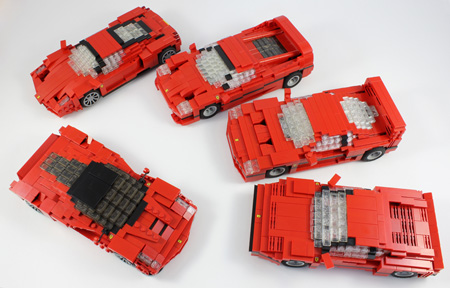
I've been born in the early 70s and have been a car fans since. In the middle 80s Porsche released the famous 959 full of highest high-tec you could imagine. I always thought that was car, or even this time period created the term "supercar". According to Wikipedia this is totally rubbish. They say it was first used in 1920 within an advertisement for the Ensign 6. Slighty disappointing.
Well then, if the 80s didn't create this term they are at least reponsible for making it famous. Here are five representatives of this genre. Accidentially thay all come from a small Italian manufacturer. Do they meet the conditions of supercar, if we continue to follow the encyclopedia entry?
- Limited-production specials from an "elite" automaker.
Yes, to call Ferrari an "elite" automaker sound not wrong and somehow the customers with superbig wallets are limited and so are the cars, too.
- Standard-looking cars modified for power and performance.
Hmm, if you are searching for the definition of a standard-looking car, these one might be the total opposite. Let's skip this one.
- Models that appeal to enthusiasts, from smaller manufacturers.
Well they appeal seriously a lot of people, but only enthusiasts with the mentioned superwallet will be able to buy them. Ferrari never was a manufacturer for the masses.
- One-of-a-kind "showcase" project vehicles built by custom car retrofitters.
They are all one-of-a-kind examples of beauty and power, so let's put in a "yes" here.
Further on the Wikipedia article there is a new definition, used during the late 20th century:
- It must be very fast, with sporting handling to match. It should be sleek and eye-catching and its price should be one in a rarefied atmosphere of its own.
Oh yes, these shoes are so fitting.
4 of 5 criteria are matching to these five cars. But the question is, aren't there more supercars made by that tiny Italian manufacturer? 1962's Ferrari 250GTO! The most expensive car in the world and a true beauty. 38 million dollars are a word! 3 litre V12 - yes, very fast. And for the eye-cathing beauty you just have to open your eyes. No other Ferrari would deserve it more to be become a member of this exclusive club. Somehow the chief engineer Giotto Bizzarrini (or one of his fellow colleagues) messed it up while putting the engine at the wrong end of the car. All the five super-Ferraris have a classic middle-rear engine layout, placing the engine in front of the back axle. Sorry 250GTO, but you are in a class of your own.
1984, Ferrari 288GTO
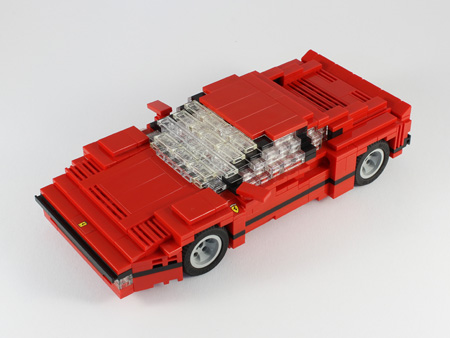
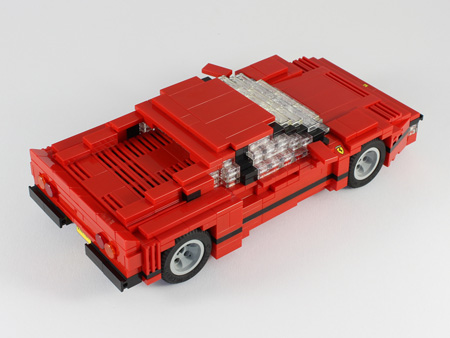

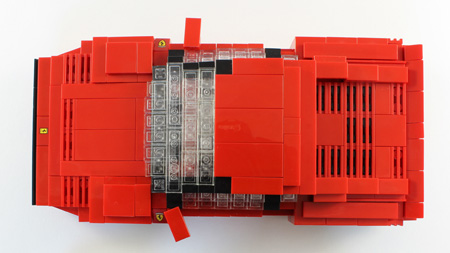
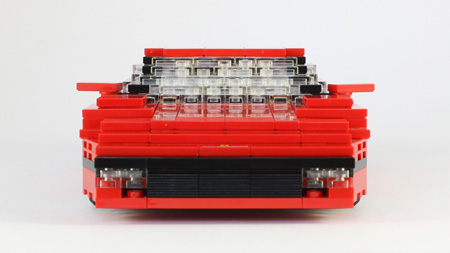
At least we find a homage to the 250GTO here. The Ferrari 308GTB didn't meet the requirements for the new Group B series. So Ferrari created a car which did. Obviously they were very satisfied with the look of the 308 and so the shape of the new 288 was quite similar. In fact there are endless differences: side mirrors at different position on the door, air intakes here and there, longer wheel distance, ... But to be honest, if you are not an expert (or simply ignorant), you might think they are basically the same.
As usual the brick based model should include as many of those details as possible. Sadly the longer wheel distance made it impossible to build the black stripe with the height of half a plate, like the model of the 308. The 288 has an odd number of studs between the wheels and so1x2 hinge-bricks couldn't be used here. The air intakes at the front and engine cover were easy to build. The ones at the bottom of the side were not.
1987, Ferrari F40
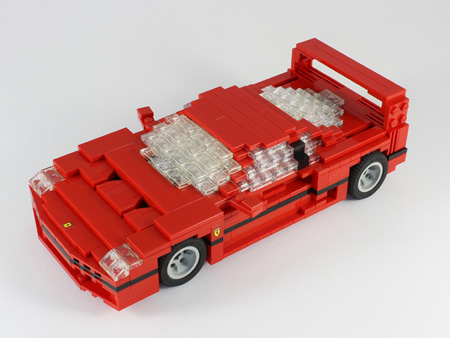
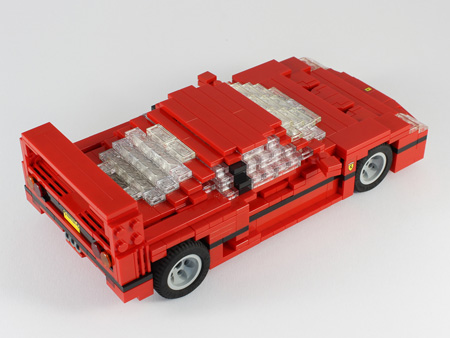

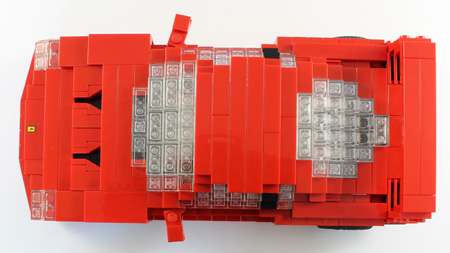
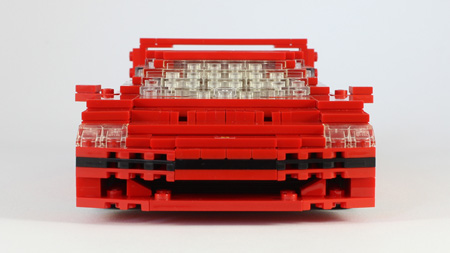
Ferrari's 40th jubilee seemed to be the perfect reason for a new supercar. Nothing to complain here. The Ferrari F40. And the presence of the Porsche 959 seemed to be the perfect reason to make this one a tiny bit faster. They are like brothers and if you are talking about one of them, you have to name the other one, too. Technically they couldn't be more different. While the Porsche 959 was the definition of what's technically possible, the F40 was the opposite. No goodies, no gadgets, no nothing but pure and raw power.
In 2015 the LEGO company released the F40 as a set and it is brilliant! A must have for all petrol heads and AFOLs. Go and get it as long as it doesn't become to expensive.
Like LEGO did with the 10248 set I always try to avoid the use of any stickers. And while building in 1:20 there is almost not needed to do so. But in this case (and in case for the other 4) I thought it's appropriate to place the prancing horse on the body. Since there are Ferrari sets within the actual product line it wasn't too complicated to get original stickers.
1996, Ferrari F50
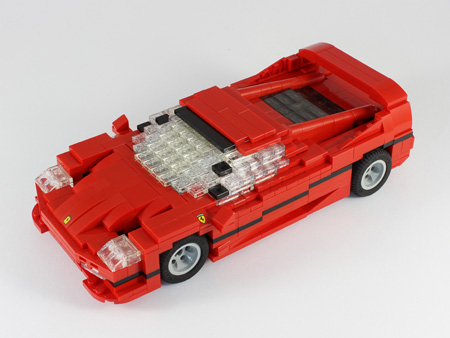
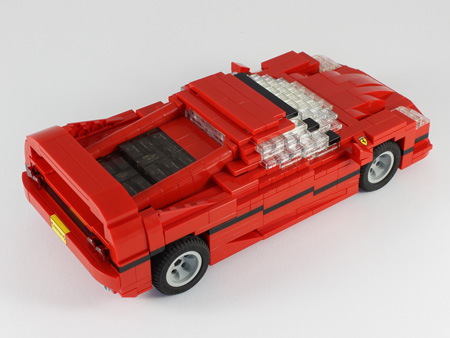
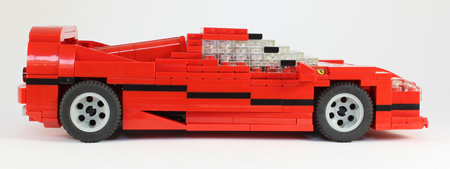
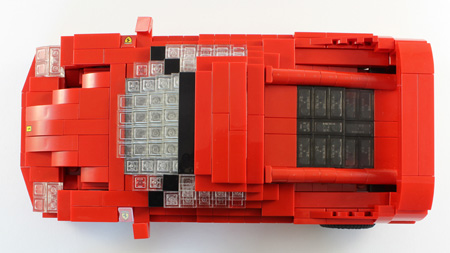
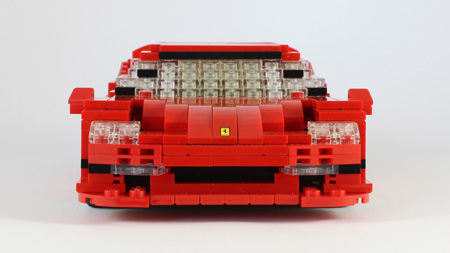
Another decade, another jubilee, another supercar - that's a plan. It looks like they took the F40 made him even more radical and washed the skirt in a wind tunnel to get rid of the typical 80s look. But including a lot of Formula 1 technology and doing small refinements to the look doesn't make a good car. On Ferraris own race track the new kid was faster, but on other tracks it wasn't. Not so good for a successor. A lot of car magazines didn't left too many good words about the F50 and he couldn't reach the popularity of the F40. But he clearly belongs to this line of 5. And he is worth to get a closer look. Build a model of the F50 and you will see his true beauty.
The curves of the 90s were indeed more challenging like the straight lines of the 80s. The biggest challenge was the massive spoiler and especially the black stripe underneath it. After a complete redesign I'm now very satisfied with the result. The Technic connector pin plate thingy was the reason to start to build the F50. The perfect element for the two humps at the engine cover.
2002, Ferrari Enzo
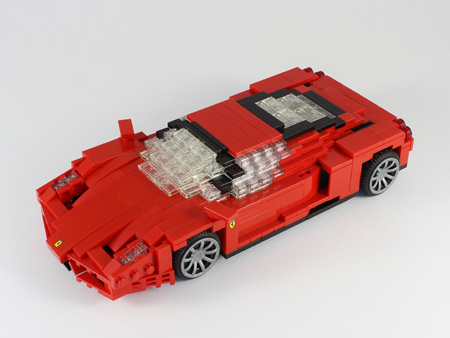
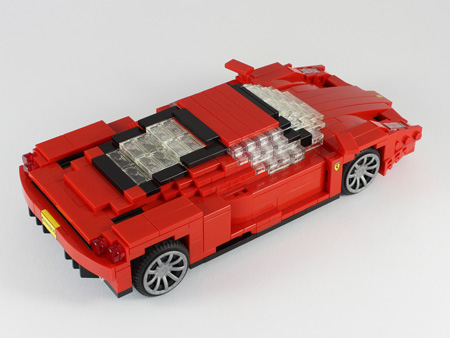
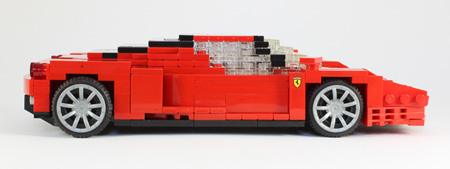
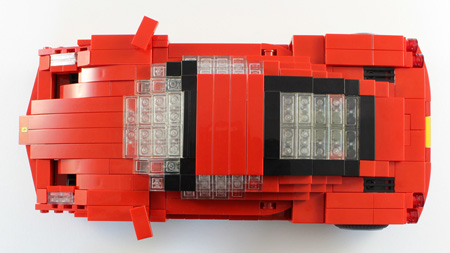
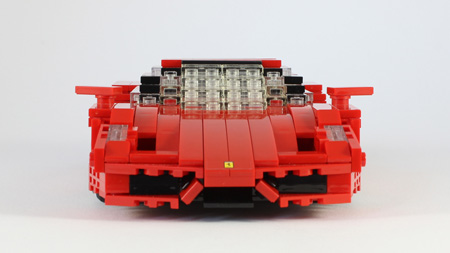
Named after the founder Mr. Enzo Ferrari. A real supercar. For a while it was the world fastest street legal car. And Ferrari developed a new feature for the Enzo: they did not sold it to everybody. Overall they made 399 cars and send invitations to good customers to buy it. Just being super-rich was not enough anymore. Chapeau to this genius marketing trick. A 6 litre V12 and again a lot of Formula 1 technique made it insanely fast.
LEGO made two models of the Enzo, a LEGO Technic and a LEGO Racers one. But both can't compete with the beautiful F40. But still - if you want to buy them today, you have to spend way more compared to what was printed on the original price-tag.
More curves, more air-intakes, more challenges and more beautiful like the F50. The flags are working perfectly for the diffusor. This model is a good example for the advantage of building the window with bricks and plates. There is no better way to build a windshield. And come on: just to build the bars and leave the windows open simply looks strange.
2013, Ferrari LaFerrari
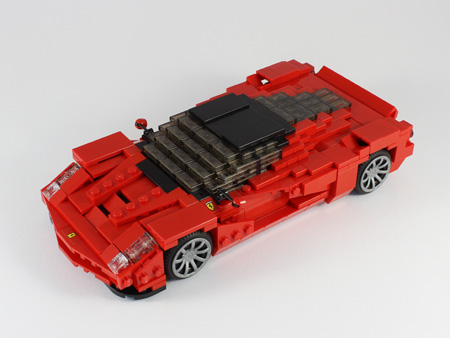
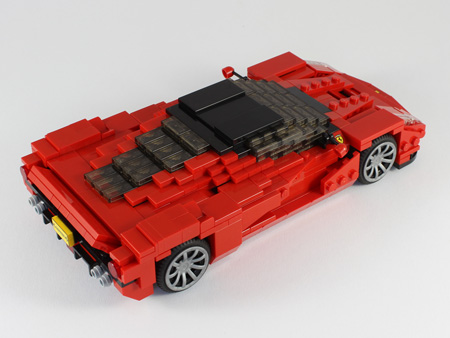
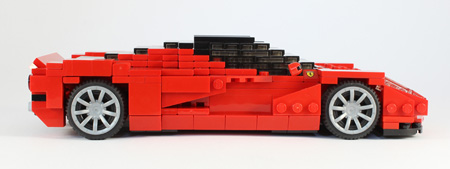
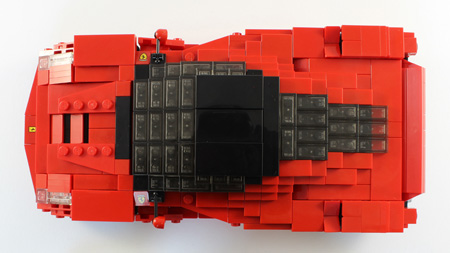
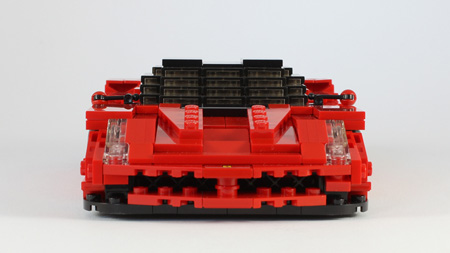
The latest thing in rocket science. The LaFerrari is a Hybrid. But not one for the environmentalists who are looking for ways to safe fuel. The battery powered electro motors are going to help the big V12 whenever he could need a bit of assistance. That might not happen very often, but when it does the are building the perfect symbiosis. Like the Enzo the entire production of 499 copies was sold before they've started to build the first one.
A few more air-intakes and there wouldn't be any body left. There is no real reason behind it, but somehow I thought the trans-black elements would fit better than trans-clear for the windows. More challenging, because of the non-existence of a trans-black jumper. Compared to the other models the LaFerrari ist a bit more fragile. A lot of components are attached with just one stud.
And yes, they all come in red! And there are no rare cases where any other colour would be acceptable. Do you hear that Mr. Jamiroquai? Looking at all five it's nice to see the evolution of car design. The straight look of the 80s, getting more curves and later a slight touch of Formula 1 to find it's height with the very modern look.
Looking at the date of release tells me that there is enough time to finish the rest of the Ferrari timeline. It would be a big surprise to see a new supercar in this decade.
Only red? Yes, of course. But it seems that the only exception is showing up at the horizon. Stay tuned...
| |

|